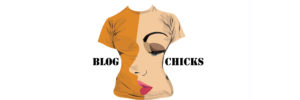The temperature has dropped so I thought I might as well make the most of it and head south. I set off with friend and overcoat and escaped to Canberra. Our mission was to tackle Von Guerard: Nature Revealed and unDisclosed, the 2nd National Indigenous Art Triennial at the National Gallery of Australia; lunch with my parents and a visit to David Sequeira‘s gallery space in Civic (downtown Canberra), in a single day.
Visiting the von Guerard exhibition was about stepping outside of a contemporary mindset and entering a completely different one – from the 19thC. It was really engaging. After we got back, I read David Hansen‘s review in the latest Art & Australia in which he talks about the curatorial rationale as one in which the historical appraisals of von Guerard are revisited – the history of its history is reviewed. This time von Guerard is presented for a 21st C audience: “re-presented for an age of global warming, of the National Geographic Channel, of Aboriginal reconciliation, even … of extreme sports.” (David Hansen, review of von Guerard Nature Revealed, Art & Australia, vol 4, 2012 pp 674 – 675) www.artandaustralia.com.au
And yes, it feels like that: the selection of works, the layout, the emphases of particular periods in his life and works all add up to furthering our understanding of who he was and what drove him.
Von Guerard is presented as an adventurous nature lover, with a respect for local indigenous people and a deep commitment to his craft, career and the natural world. He was a 19thC greenie – intent on recording the world in its vastness, its variety and in its detail. For me, it is this side of the person and his work that is worth understanding. Whilst his works may be old-fashioned in appearance, they are thoroughly current in what they reveal of his intention.
The detail in his work is unrelenting, though it remains more Romantic than Realist. The paintings are detailed and rich but it is his sketchbooks and lithographs which are truly revealing and which, for me, are the gems in the exhibition. Unadorned, without the distractions of colour or noble themes, the sketches reveal the keenness of his eye, the steadiness of his hand and the commitment to his vision.
Von Guerard was intrepid to say the least. He came to Australia from Europe to seek his fortune in the gold rush and stayed 30 odd years. His journeys took him far and wide, in no doubt difficult conditions and circumstances but with the single purpose to record the plant life and landscape before him. With sketchbooks, brushes, inks and paints, possibly at times an easel, he ventured into new terrain to sketch/ paint extraordinary scenes. www.nga.gov.au/VonGuerard
 |
| Eugene von GUÉRARD Ferntree or Dobson’s Gully, Dandenong Ranges 1858 pen and ink and wash 37.9 x 54.8 cm (image and sheet) NGV, Melbourne Felton Bequest, 1960 647-5 |
Von Guerard’s depictions are informed by both a European and colonial Australian sensibility. What was really interesting then, was to wander from 19thC colonial Australian landscapes into unDisclosed the 2nd National Indigenous Art Triennial. One minute standing in the middle of a colonial past; the next, stepping forward out of the past, looking back and re-thinking it. Colonial references continue, but that history is represented and retold from a completely difference perspective.
 |
| Michael Cook Broken dreams #2 2010 inkjet print on archival paper, ed 8 124x100cm image courtesy of the artist and Dianne Tanzer Gallery & Projects, Melbourne |
Michael Cook‘s two beautifully poetic photographic series, Broken Dreams and Undiscovered, make obvious references to the period (& slightly earlier) to which von Guerard belonged. Here is a retelling of colonial stories through the eyes of Aboriginal people. The photographic narratives feature only Aboriginal people, who have now become the sole protagonists. Therein lies Cook’s approach – an alternative to a colonial dialogue, as one which is wholly owned by Indigenous Australia. www.michaelcook.net.au Also in the latest Art & Australia, an essay on Michael Cook by Maurice O’Riordan, pp572 – 575.
Danie Mellor‘s approach is similar. His works speak of dual histories. His large scale drawings retain a glimpse into another older world and, a bit like von Guerard, I see in his work a similar level of conviction to his natural world and his cultural history. He uses old fashioned techniques to create his works: composition of landscape, bordered by a continuous wreath of lush flora and fauna decorations, all held within elaborate gilt frames. But his intention is edgier. He uses limited colour. The works are basically blue and white, ala porcelain (think willow pattern blue and white) and animated by brightly coloured animals, birds and Indigenous people which sparingly inhabit the landscape, scenes of the FNQ tropical rainforest of his youth. And the not-so-usual smattering of crystals and glitter decorate and highlight the outer edges of the works, seducing us with their twinkle under gallery lights.
 |
| Danie Mellor Paradise generations 2012 pastel, pencil, glitter, Swarovski crystal and wash on Saunders Waterford paper 97.5 x 148.0 cmimage courtesy of the artist and Michael Reid |
But unDisclosed is no means an exhibition of the study of a colonial past and its travesties. The discourse broadens with the work (again photography, hand-coloured digital prints on canvas) of Nici Cumpston. Elegant yet very disturbing, these large scale photographs evoke a real sense of loss for irrevocable damage done to her Country – our shared environment.
Vernon Ah Kee‘s installation, Tall man, a 3 part video channel, text, and portrait, in which he quietly rages over the deep injustices of the Palm Island tragedy is compelling. A full series of portraits is featured in the rehang of the Australian art collection at AGNSW. www.milanigallery.com.au
Some other artists included are Fiona Foley, Sally Gabori, Bob Burruwal and Lena Yarinkura, Julie Gough and Jonathon Jones. This exhibition is a fresh, energetic, biting and moving overview of the diversity of concepts and practices in contemporary Indigenous art. This is only the 2nd Triennial but it is already well established and respected. The National Gallery offers an opportunity Indigenous curators and students to access its facilities and contribute to the development of the exhibition. www.nga.gov.au/unDisclosed
Back in Sydney-town, I find that Danie Mellor has a show in 2 parts, Paradise Garden at Michael Reid Fine Art in Elizabeth Bay and at Manly Regional Gallery & Museum (adj to the Wharf at Manly). So I (all of us) get to look and think about his work some more. At Michael Reid until 30 June. www.michaelreid.com.au
I rarely head north in search of decent art but Manly Regional Gallery is an exception. This small public gallery is a museum, community gallery and exhibition space at the beach and as the current exhibitions show, offers great opportunity for engagement with some great work. Danie Mellor is in the access space, alongside Arthur Boyd and his father, potter Merric Boyd; a small but cohesive permanent collection of contemporary ceramics and of course, the beach museum. Old cozzies and brollies, memorabilia and paraphernalia from our long standing love affair with the beach are on display. If you’re not up to the surf, then venture to the harbourside and enjoy a wander through this museum/ gallery. Entry is free. www.manly.nsw.gov.au/attractions/art-gallery-museum
Back to our Canberra adventure, we finished our day at David Sequeira‘s space Everything Nothing Projects. His very apt descriptor is Small Space Big Visions. He was keen to take us on a tour around his immaculate teeny tiny ‘white cube’ which is dedicated solely to geometric abstraction. Colour is at its heart and sings in this space: just see Melinda Harper‘s works, including paintings, tapestries and paper collages, which are currently on show. Sequeira’s list of artists is impressive, ambitious and exciting – eg John Nixon, Eugene Carchesio and the late NY based Australian John Vickery, see more on the website or find David on Facebook. A small space can achieve big things by offering to artists an alternative approach. There is nothing else like it in Canberra. Put it on your list when next in town www.everythingnothingprojects.com
 |
| View of gallery Everything Nothing Projects featuring the work of Melinda Harper |
And lunch at the Gallery with Mum and Dad and my comrade-in-art was delicious. Mission south was well accomplished.


1 Comments
Great post. I was checking continuously this blog and I am impressed! Very useful information particularly the last part 🙂 I care for such information much. I was looking for this particular information for a long time. Thank you and best of luck.